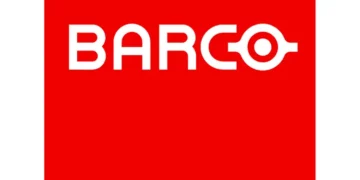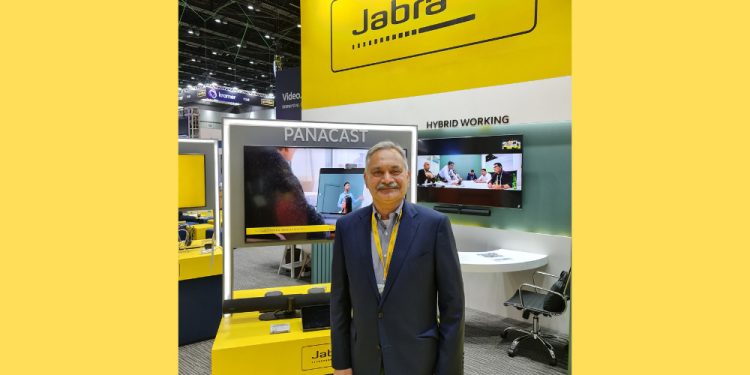This is the second time Jabra is participating in the AV industry trade show in Bangkok. According to Aurangzeb Khan, senior vice president of Intelligent Visions Systems, Jabra, the business is growing, as is their presence in the region.
“We see the show is expanding to cover all of Asia now. We have had partners from the region, including Southeast Asia, India and the rest of the Asia Pacific, visiting us at InfoComm Asia. This region is a very important market for us,” explained Aurangzeb Khan.
Jabra has been in video solutions since 2019 through the acquisition of Altia, a pioneering video technology company based in California. The company, since then, pioneered video technology in building multi-camera arrays that increased the field of view and performance. Traditional meeting video camera technology delivers a limited field of view and performance. “We wanted to solve this problem by delivering a full 180-degree view,” explained Aurangzeb Khan.
“Since the pandemic, the use of video and hybrid collaboration has grown exponentially. As people are using it more, they want a good experience. Our products have a lot of AI built into them to allow the remote user to use with the reduction of cognitive dissonance.”
With Jabra’s latest Panacast 50 models, there are three cameras, with each camera a non-distorting camera with very high resolution 20 megapixels capabilities. That way, the view captures the room completely, presenting everybody in the room from one end to the other.
Other technologies from other companies try to expand the field of view by using ultra-wide-angle cameras, and these create distortion of images, with people in the middle looking thinner than normal and people on the edges looking like they are trapezoidal. This creates cognitive dissonance and leads to fatigue as images people see that don’t look right. The brain is trying to process, and the resultant cognitive dissonance increases stress.
Jabra’s approach is different as the company uses three cameras with their proprietary imaging technology enabling the synchronising, stitching and optimisation in real-time to achieve one full field of view that is presented on a cylindrical panorama. The value of that is that people look correct, everybody is included in the conversation, and they are presented in a natural way. This reduces cognitive dissonance and stress, paving the way for an improved user experience.
The product is very successful in the market, with Microsoft and Zoom being close technology collaboration partners. Microsoft, in particular, has been collaborating with Jabra on the development and use of this device in the US.
At InfoComm Asia, Jabra is specifically showing an expansion of its video portfolio, which is the Android video bar system. Based on the same fundamentals of a Jabra Panacast 50, the video bar adds an Android processor to make it more widely available for deployment. Currently, companies like Qualcomm, and Microsoft are working with Jabra to pioneer these new experiences and underlying technology to create state-of-the-art applications.
The response at InfoComm Asia, according to Aurangzeb Khan, has been amazing with a series of keynote talks, customer meetings including Unilever, as well as partners like ESCO visiting and spending time at the booth. The company has seen more than 20 partners from India and more than 100 from Asia Pacific from Australia and Japan visiting them at the show in Bangkok, Thailand.
“Growth for video and hybrid solutions has been fuelled in part by the pandemic, which allowed people to get time back as well as flexibility. They no longer need to spend unproductive time commuting to and from work, not be bound by the traditional mode of working hours as well as be more effective in meetings. So going to the office becomes purposeful, and it is a choice for people,” concluded Aurangzeb Khan.
















